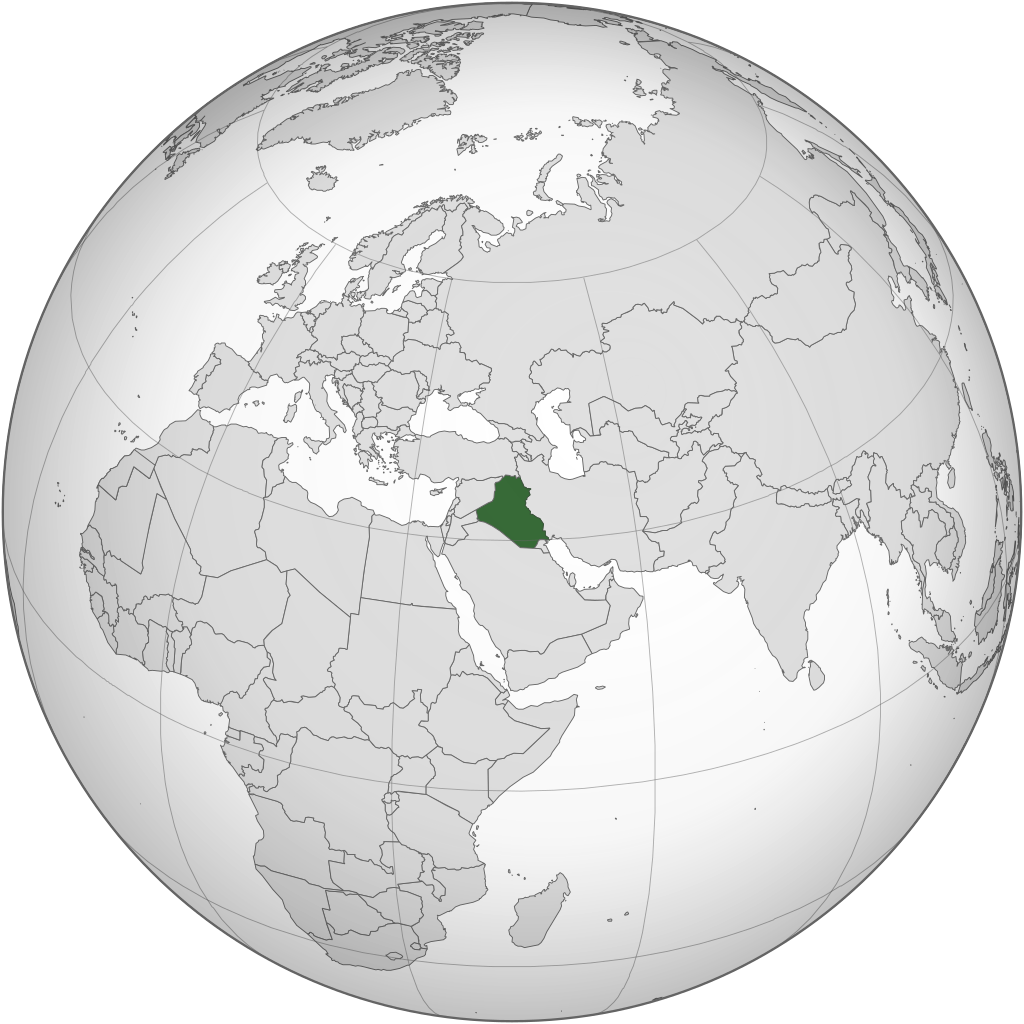More languages
More actions
| Republic of Iraq جمهورية العراق کۆماری عێراق | |
|---|---|
 | |
| Capital and largest city | Baghdad |
| Official languages | Arabic Kurdish |
| Recognized regional languages | Aramaic Armenian Turkish |
| Area | |
• Total | 438,317 km² |
| Population | |
• 2020 estimate | 40,222,503 |
Iraq, officially the Republic of Iraq, is a country in Western Asia.
History
Ottoman Empire
In 1514, Iraq was conquered by the Ottoman Empire. After the First World War, the Ottoman Empire was split up and Iraq was administered by the British Empire.[1]
British mandate
It took four years for the British to colonize Iraq. After a nationalist revolt in 1920, the British installed Faisal as King of Iraq instead of directly ruling from London.[1] In 1925, the British dropped poison gas from planes to combat a revolt in the northern Kurdish region of Iraq.[2] In 1932, Britain under a Labour government gave independence to Iraq and Nuri al-Sa'id became prime minister.[1] After independence, Iraq continued to be occupied by British military bases. Between 1935 and 1954, Iraq was put under martial law 11 times.[2]
Monarchy
Faisal died of a heart attack in 1933 and his son, Ghazi, took the throne. A military coup occurred in Iraq in 1936. In 1941, after pro-British politicians were removed from power, the UK invaded and occupied Iraq. Five political parties were founded in 1945, including the pan-Arab Istiqlal (Independence) Party. Iraq supported Palestine in the First Arab–Israeli War in 1948.[1]
Republic
In 1953, the United States took control of Iraq and established the Baghdad Pact with Pakistan, Iran, Turkey, Iraq, and the U.K. On 14 July 1958, Brigadier Abd al-Karim Qasim led a military rebellion that overthrew the last king of Iraq. Qasim then became the first president of Iraq. After the revolution, the Iraqi Communist Party formed an alliance with the national bourgeoisie. U.S. President Eisenhower suggested invading Iraq but decided not to due to the presence of the United Arab Republic and the movement of Soviet troops into southern republics near Iraq.[2]
In 1963, a US-backed military group overthrew the Iraqi President Qasim. In 1972, Iraq signed a defense treaty with the Soviet Union. After Saddam Hussein took power in 1979, the United States armed Iraq for its war against Iran.[2]
US war crimes
In 2007, US mercenaries working for Blackwater killed 17 civilians in the Nisour Square massacre.[3]
In 2010, documents leaked by Chelsea Manning showed that the majority of Iraqis killed by US forces were civilians.[4]
In 2016, Barack Obama dropped a total of 12,095 bombs on Iraq.[5]
In March 2017, a US air strike killed 112 civilians in Mosul.[6]
References
- ↑ 1.0 1.1 1.2 1.3 Phebe Marr (2012). The Modern History of Iraq (pp. 6–72). Westview Press. ISBN 9780813345215
- ↑ 2.0 2.1 2.2 2.3 Richard Becker (2011-07-14). "Our view on modern Iraq" Liberation School. Archived from the original on 2020-09-22. Retrieved 2022-06-24.
- ↑ Sabrina Tavernise (2007-09-18). "U.S. Contractor Banned by Iraq Over Shootings" The New York Times. Archived from the original on 2020-10-18. Retrieved 2022-02-02.
- ↑ "Baghdad War Diary" (2010-10-22). Wikileaks. Archived from the original on 2022-01-27. Retrieved 2022-02-02.
- ↑ Ghast Lee (2017-01-23). "Shocking Map Shows Where Barack Obama Dropped His 26,000 Bombs" Sick Chirpse. Archived from the original on 2017-07-15.
- ↑ Ghazi Balkiz, et al. (2017-03-28). "Mosul: 112 civilian bodies pulled from site of coalition airstrike" CNN. Archived from the original on 2021-10-13. Retrieved 2022-02-02.
